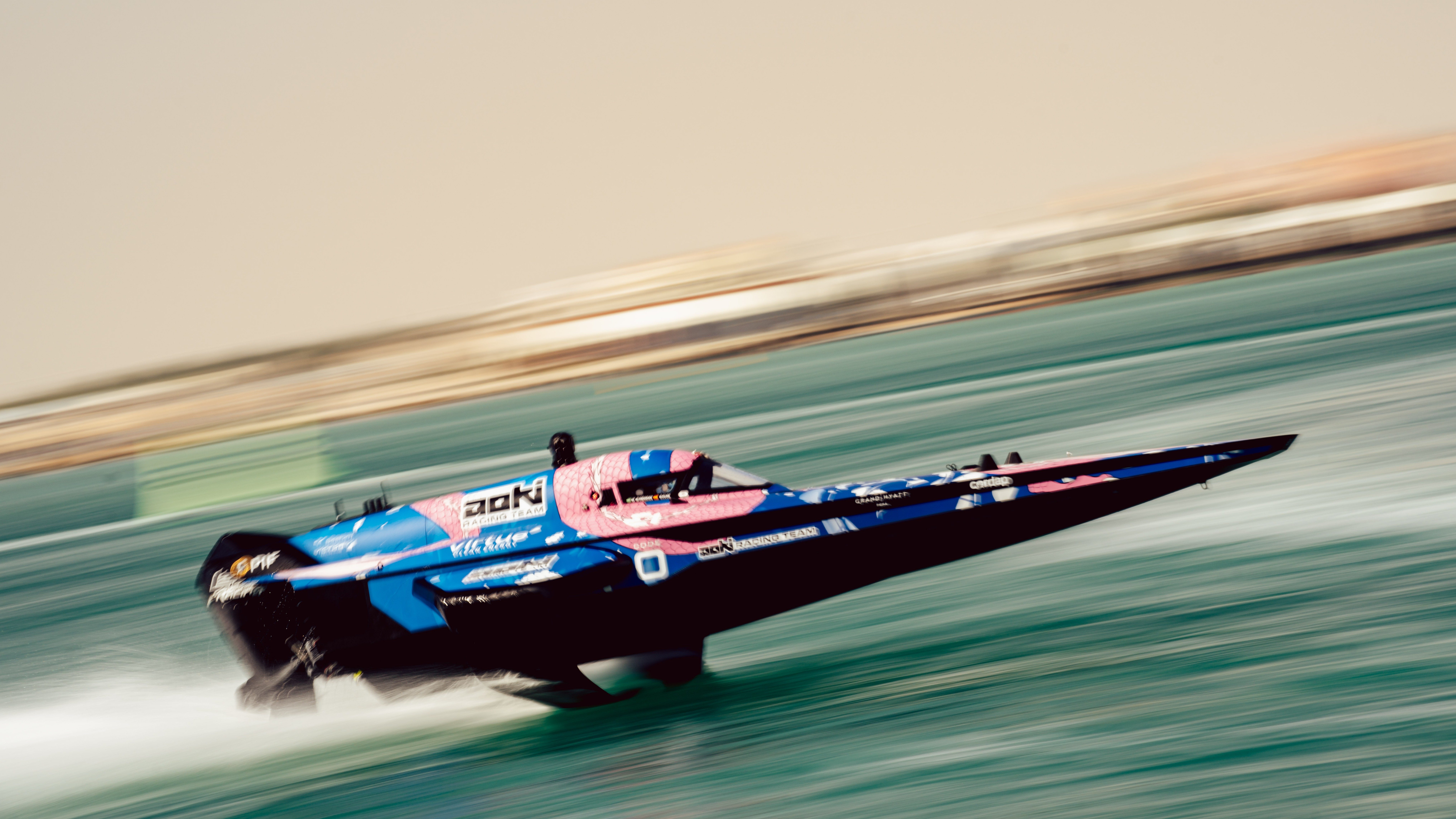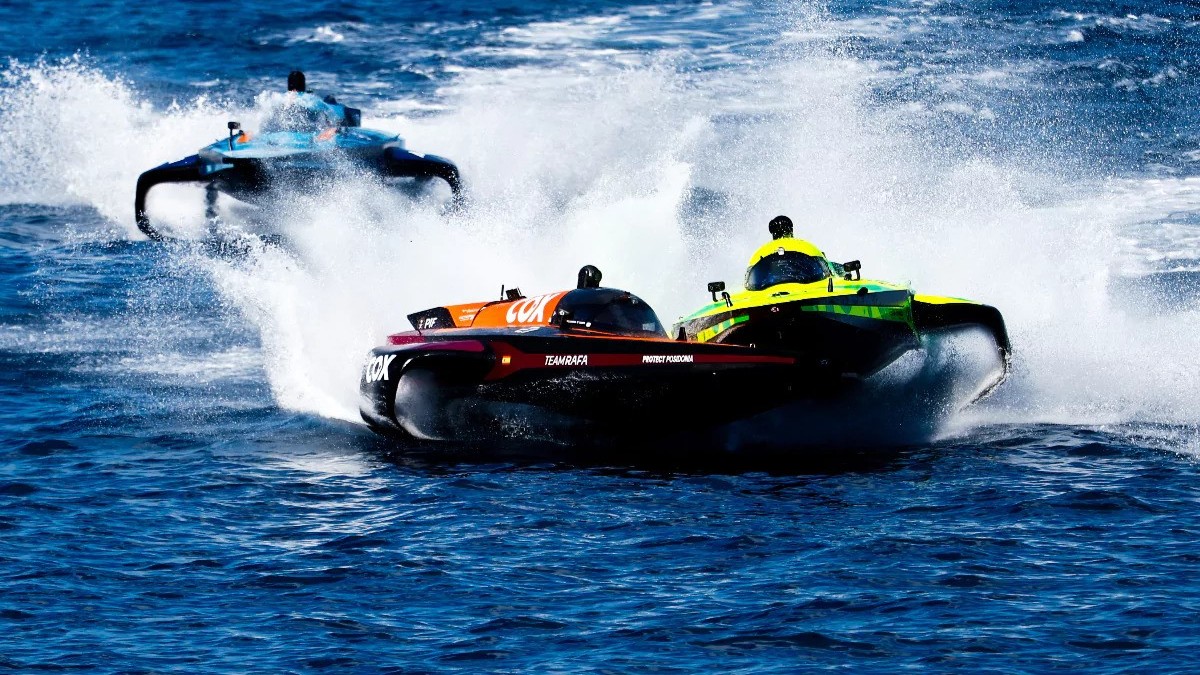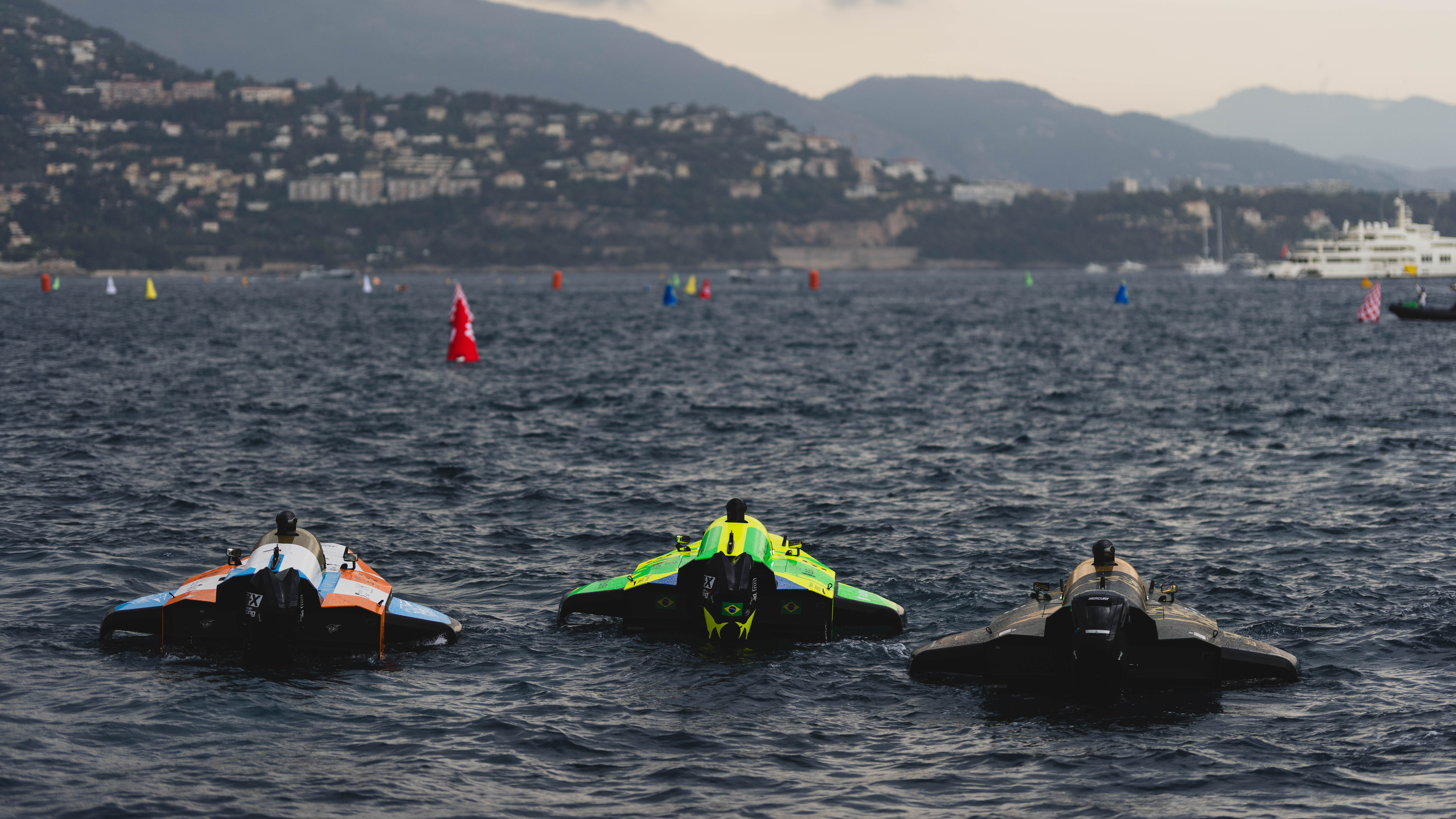How 'flying boats' are bringing EVs to the ocean — with the help of LeBron James and Tom Brady
A new electric motorsport championship is making an ambitious pitch to bring electric engines to the ocean — and Will Smith, LeBron James and Tom Brady are along for the ride.

Skimming across the water on thin hydrofoils, they look more like low-flying UFOs than boats.
But the E1 Series' "RaceBirds" — single-seater electric powerboats with 6,000-volt engines that can reach speeds of up to 50 knots (58 miles per hour, or 93 kilometers per hour) — are far from extraterrestrial. Instead, they're part of a fast-growing sport that hopes to bring electric vehicles to the water.
That's the pitch behind the UIM E1 World Championship. Dubbed the "Formula One of the Sea," it already has the backing of celebrity team owners such as Will Smith, LeBron James, Tom Brady, Rafael Nadal, Sergio Pérez and Virat Kohli.
The 2025 championship, the second run of the series, is taking place across seven locations: Jeddah, Saudi Arabia; Doha, Qatar; Dubrovnik, Croatia; Lago Maggiore, Italy; Monaco; Lagos, Nigeria; and Miami. It’s a stage for its nine teams to race to become champions of the water. However, for the competition's founders, it's not just about the contest. They want to prove that electric motors can make the leap to the ocean.
"Water mobility is contributing to pollution in a bad way," Rodi Basso, a former NASA scientist and F1 engineer who is the co-founder and CEO of E1, told Live Science. "Sustainability is now becoming almost a tricky word. It started from communication and awareness, which was needed; we have an issue. But now, we cannot keep feeding this anxiety; we need a solution. The boat is a solution."
A new sport is born
Basso's inspiration for E1 came during the early COVID-19 pandemic, when he and Alejandro Agag — now E1's chairman and co-founder and the pioneer of the electric motorsport Formula E and Extreme E championships — were taking a walk by London's River Thames.
Related: World's 1st electric flying passenger ship could 'revolutionize how we travel on water'
Get the world’s most fascinating discoveries delivered straight to your inbox.
After Basso offered the spark of an idea for an electric powerboat championship, Agag provided the investment and motorsport expertise needed to get development off the ground — or off the surface of the water. Taking inspiration from how birds glide across aquatic surfaces, the 24-foot-long (7.3 meters) boat was designed by Seabird founder Sophi Horne to lift its hull more than 3 feet (1 m) above the surface at speeds of 19.5 mph (31 km/h).
"It's a bit like pulling back on the sticks of an airplane, where, as you roll in, it'll dive, so you kind of pull back," Sam Coleman, a pilot on Team Brady who won the first E1 World Championship in 2024, told Live Science. "It's a lot more akin to flying than driving a boat."

The feat means that the boats produce far less waves when balanced atop their three wing-like foils, thus reducing coastal erosion. It also lowers friction with the water to ramp up the boats' speeds. These design elements combine with 20 seconds of boost to supercharge the battery output from 95 to 140 kilowatts, enabling the boats to reach 50 knots.
But the enhanced speed comes with some major downsides. Bringing the RaceBirds up onto their foils may make them faster, but it also renders them incapable of making sharp turns. It also introduces the risk of cavitation — the formation of air bubbles — in the water below.
"Around 50 knots, they get unstable," Basso said. "The water around the foil starts bubbling, so you have less pressure and less force pushing the boat up, and then the boat can collapse. And it does so with very little warning."
"So now, the pilots are building incredible sensitivity and understanding, finding where that moment is, and riding on the edge of that moment," he added.
This means pilots must carefully manage when to use their boosts and when to lift their boats onto their foils during races, in which they compete in a series of time trials to qualify for a final five-boat battle to the finish line.
To beat the competition, they must find the right racing line around corners. That might mean riding a wide arc perched atop their foils or smashing into the water close to buoys, before zipping away on their boost, all while navigating the choppy waters generated by other boats.
It requires enormous concentration and split-second decision-making, both of which are strained further by cockpit temperatures that can climb to 167 degrees Fahrenheit (75 degrees Celsius).
"It's draining; it's like sitting in a sauna and trying to drive a racing simulator that's bouncing up and down," Coleman said. "The window is so small, you can be absolutely nailing it and then all of a sudden, you're one point of a degree out on your trim setting and that's enough to induce a porpoise, or an oscillation, that takes ages to recover from."
To help pilots perform their best, teams of engineers back on shore analyze data taken from every part of the boat before advising them over radio. Team owners also follow along closely with the results of races.
"Tom Brady is the team owner for our team, and for me to say that is very surreal. But the biggest thing is that he is into it," Coleman said. "He follows it. It's like when Rafa and Will Smith were in Lake Como: They had a great time, they enjoyed it, they understand it, and you can see that they're super competitive, and they have such a great opportunity to bring eyeballs to a new sport and then help elevate it. I think it's a really exciting journey that we're on."
Moving in silence
Keeping races fresh and competitive means that changes are consistently being made to the RaceBirds' engines and propellers. The design tweaks aren't just to improve performance and handling but also to minimize the zero-emission, virtually silent craft's impact on its surrounding environment.
The result is an electric vessel that's around 50 times quieter than traditional combustion engine boats, according to Carlos Duarte, E1's chief scientist. Duarte, a marine biologist who won the 2025 Japan Prize for his contributions to research on marine and coastal ecology, is working through E1 on voluntary schemes with industry to make ships run quieter.

"As we saw during the COVID lockdown, with only a 20% reduction in [ships'] noise, there were reports from all over the world of large marine animals being reported in areas that they had not been seen for decades," Duarte told Live Science. "So it is a low-hanging fruit, very easy to solve. And in fact, addressing noise creates benefits for the boat operators, because electric boats are not only silent, but they're more cost-effective than combustion engine boats."
Duarte is also overseeing efforts to improve the waterways and ecosystems in the E1 race cities. These measures include aquatic restoration and conservation efforts, as well as steps to offset the environmental impact of the races themselves.
He views building stakeholder partnerships through E1 as a vital avenue for environmental restoration — specifically, away from drawn-out political conferences where, he said, "despite my scientific credentials in the marine space," he, and scientists in general, lack influence.
"The reality is that I don't have a voice, but I want to help those with a voice to communicate the messages that I think need to be communicated to society," Duarte said. "So that's also a platform that the team leader approach of E1, celebrities with voices, can help me."
E1’s 2025 season is running from Jan 25. to Nov 8., with upcoming races in Lagos on Oct. 5 and Miami on Nov 8.

Ben Turner is a U.K. based writer and editor at Live Science. He covers physics and astronomy, tech and climate change. He graduated from University College London with a degree in particle physics before training as a journalist. When he's not writing, Ben enjoys reading literature, playing the guitar and embarrassing himself with chess.
You must confirm your public display name before commenting
Please logout and then login again, you will then be prompted to enter your display name.



